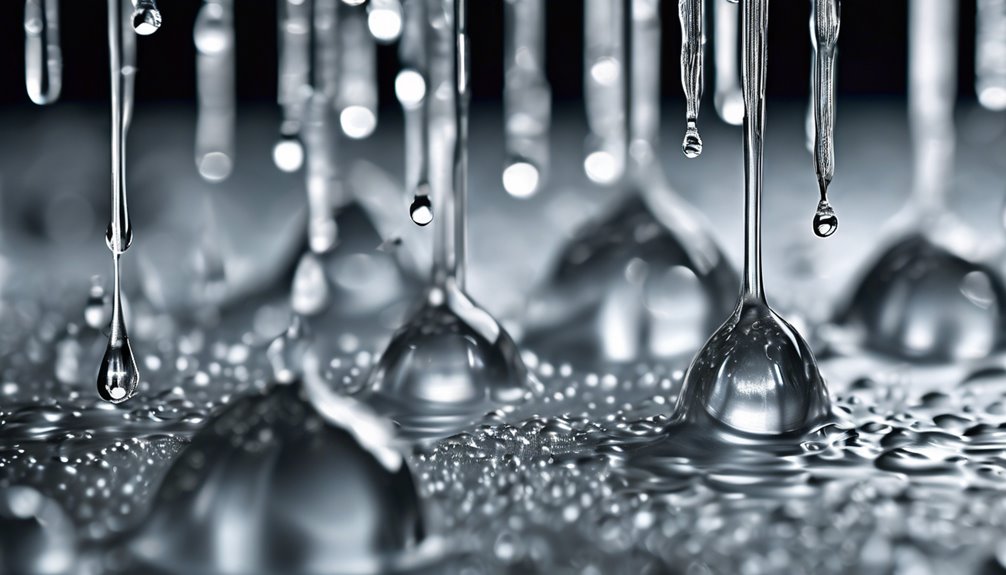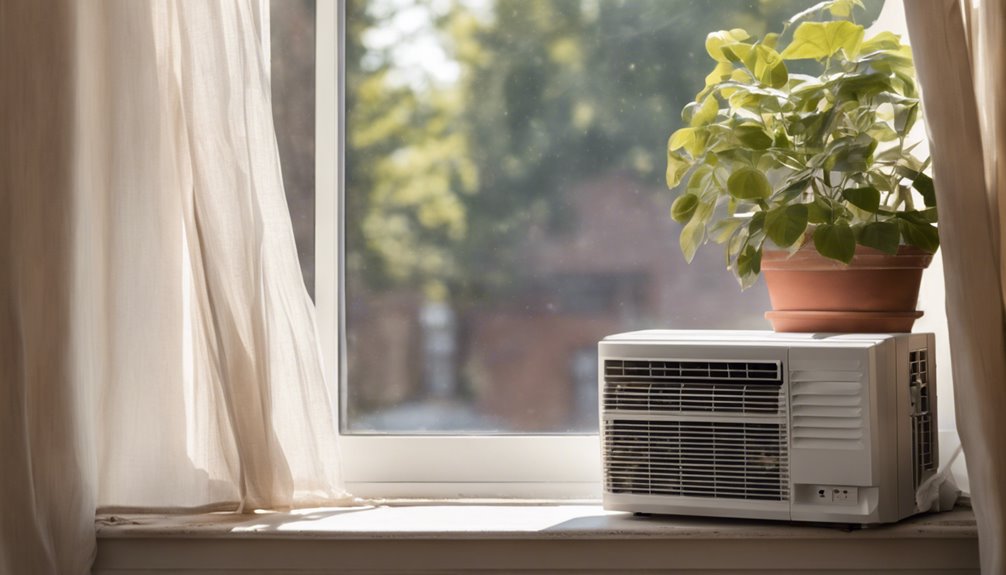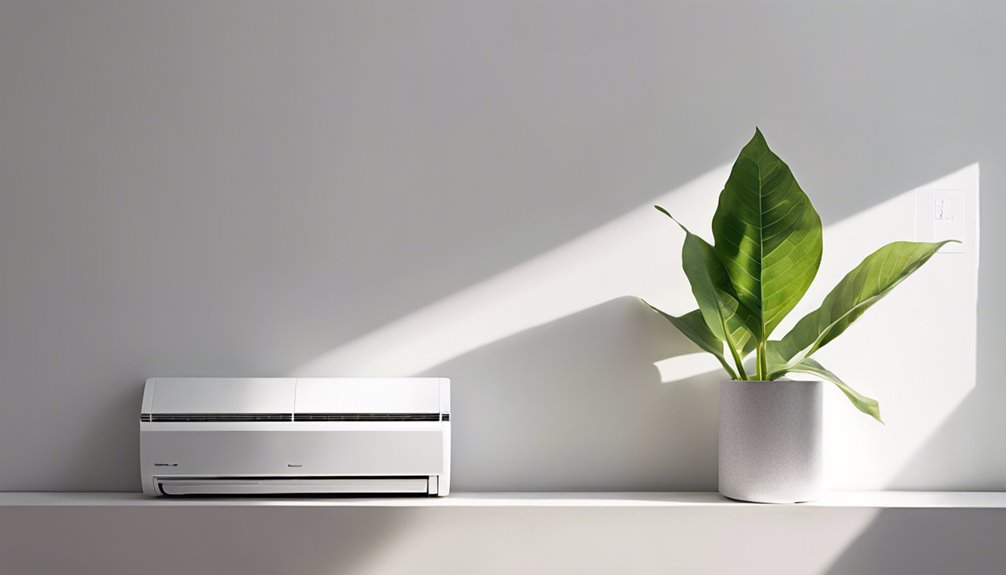You're searching for a solution to the AC water dripping from your indoor unit, and you're not alone. This common issue is often caused by one of five main culprits: clogged air filters or coils, improper installation or leaks, ice buildup and defrosting issues, condensate drainage problems, or humidity and temperature imbalance. Take a closer look at these potential causes, and you might just find the fix you need to get your AC running smoothly – and quietly – again.
Key Takeaways
- Dirty air filters and coils can cause water dripping from the indoor unit, so regular cleaning and replacement are essential.
- Improper installation or leaks in the indoor unit's connections can lead to water dripping, and should be inspected and fixed by a professional.
- Ice buildup and defrosting issues can cause water to drip from the indoor unit, and can be prevented with regular maintenance and refrigerant checks.
- Clogged condensate drainage systems can cause water to drip from the indoor unit, and should be regularly checked and cleaned to ensure proper water flow.
- Humidity and temperature imbalances in the home can cause water to drip from the indoor unit, and can be prevented by regularly checking humidity levels and balancing them.
Clogged Air Filters and Coils
Clogged air filters and coils are a common culprit behind AC water dripping issues.
You mightn't realize it, but dirty filters can cause your AC to work harder, which leads to increased condensation and eventually, water dripping. When was the last time you cleaned or replaced your air filters? If it's been a while, it's likely they're clogged with dust and debris.
Make it a habit to check and clean them regularly. Additionally, coil cleaning is essential to prevent water dripping. Dirty coils can reduce airflow, causing the AC to produce more condensate, which can lead to water dripping.
Improper Installation or Leaks
Your air conditioning unit was likely installed with care, but even the smallest mistake can lead to AC water dripping issues.
Improper mounting of the indoor unit can cause it to tilt, allowing condensate water to flow out instead of into the drainage system.
Additionally, loose connections between the pipes or tubes can also lead to leaks.
When connections are loose, water can escape, causing drips and water damage.
It's essential to double-check the installation and ensure all connections are secure and properly tightened.
If you're not sure about the installation, consider consulting a professional to inspect and fix any potential issues.
Ice Buildup and Defrosting Issues
As you've ensured the installation is secure, it's time to examine another potential culprit behind AC water dripping: ice buildup and defrosting issues.
If your AC's coil is frozen, it can cause water to drip from the indoor unit. Check if the coil is frozen by feeling for ice or frost. If it is, switch your AC to defrost mode, which will help melt the ice.
Ensure your AC is properly maintained to prevent ice buildup. Clean the air filter regularly, and check for refrigerant leaks. A well-maintained AC will reduce the likelihood of ice buildup and defrosting issues, which can lead to water dripping from the indoor unit.
Condensate Drainage Problems
The condensate drainage system is responsible for removing excess moisture from your air conditioner.
If it's not functioning correctly, you'll experience condensate overflow, leading to water dripping from your indoor unit.
Check your drainage system regularly to ensure it's not clogged with dirt, dust, or debris. You might need to perform a drainage modification to ensure proper water flow.
Make sure the drainage tube is securely connected to the unit and that the condensate pan is level. If you're still experiencing issues, consider consulting a professional to diagnose and fix the problem.
Humidity and Temperature Imbalance
Humidity levels in your home can greatly impact your AC's performance, and an imbalance can cause water to drip from the unit.
When the air in your home is too humid, it can lead to condensation on the coils, resulting in water dripping from the unit. On the other hand, if the air is too dry, the AC may not be able to cool your home effectively.
- Your AC is producing more condensate than usual.
- The humidity sensors aren't functioning correctly.
- You notice temperature fluctuations in different areas of your home.
- Your energy bills are higher than usual.
Frequently Asked Questions
Can I Fix the Issue Myself Without Calling a Professional?
You can try DIY troubleshooting before calling a pro, but be honest about your self-repair confidence – if you're unsure, it's better to seek help to avoid further damage or safety risks.
What Causes Water to Drip From the AC Indoor Unit at Night?
At night, when you're running your AC, you might notice water dripping – it's likely due to increased nighttime operation, causing condenser coils to work harder, resulting in more condensation and water accumulation.
Is It Normal for AC Units to Produce Some Water?
You might wonder, is it normal for air conditioning units to produce some water? Yes, it's normal due to condensate formation, which occurs when warm air meets the cool coil, causing moisture buildup that's usually collected and drained.
Can I Use a Dehumidifier to Reduce Water Dripping?
You can use a dehumidifier to reduce water dripping by leveraging its benefits, such as enhanced water absorption, which helps remove excess moisture from the air, thereby decreasing condensation and subsequent dripping.
Will Turning off the AC Unit Stop the Water Dripping?
When you turn off the AC unit, you'll likely stop the water dripping, similar to what happens during a power outage or emergency shutdown, but it's essential to identify and fix the underlying issue to prevent further problems.
Conclusion
You've identified the reasons behind the annoying AC water dripping from your indoor unit. Now it's time to take action. Check and clean those clogged air filters and coils, inspect for improper installation or leaks, and ensure proper condensate drainage. Also, balance your humidity and temperature levels. By addressing these potential issues, you'll be able to enjoy a dry and comfortable indoor environment once again.



